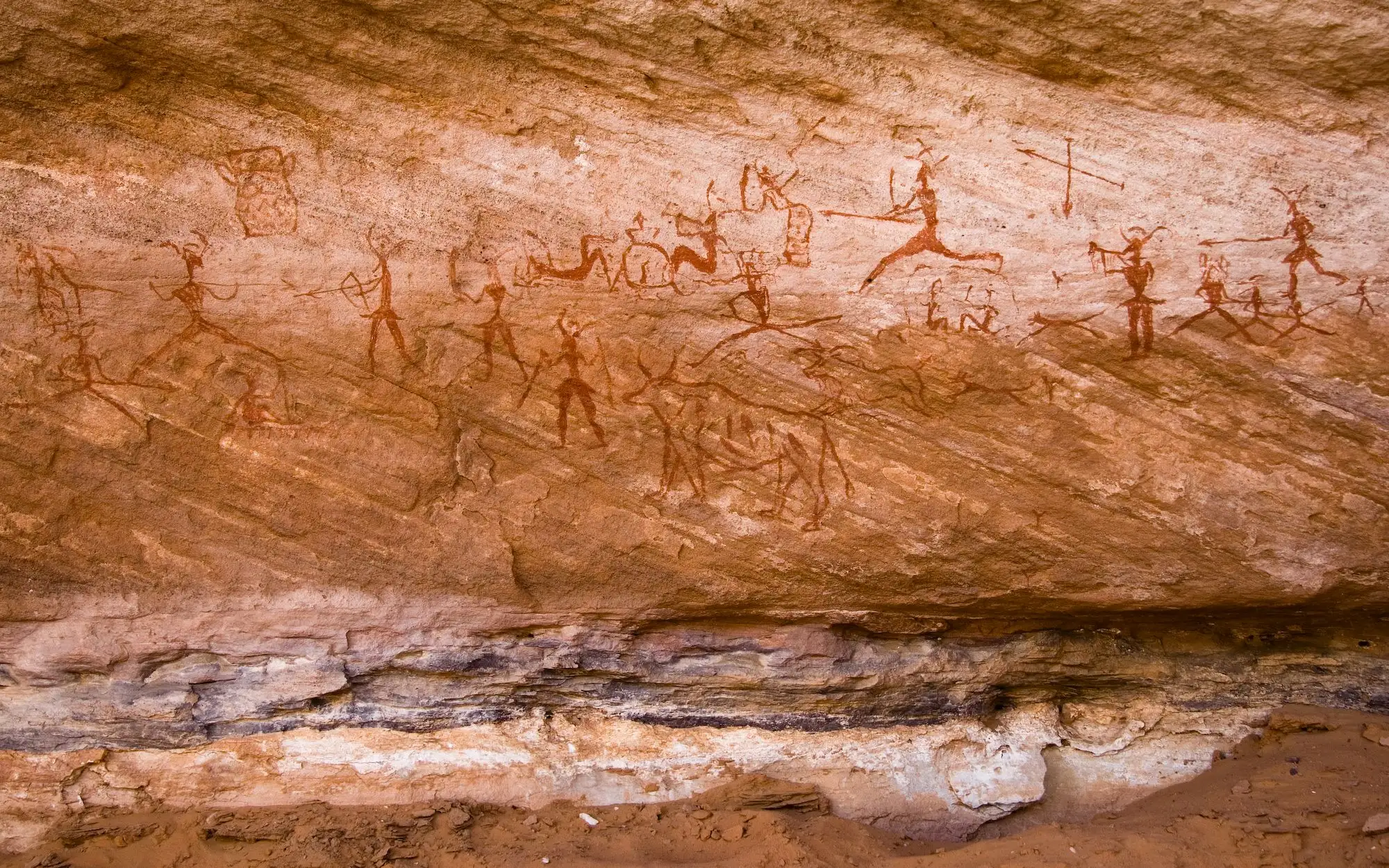
The rock art of Tadrart Acacus, a testimony of the adaptation of human civilizations to adversity
The Tadrart Acacus Rock Site is located in southwestern Libya, in the Sahara region. They are a series of rock formations that feature thousands of rock paintings and engravings spanning a time period of over 12,000 years.
The Tadrart Acacus Mountains were inhabited by groups of hunter-gatherer humans continuously since the Holocene, despite climatic fluctuation during the African Humid Period.
These sites have been important in the understanding of food processing and the mobility of human groups in their adaptation to climatic variation. All this information has been obtained thanks to the testimony in the form of rock art that its inhabitants once carved in the rocks, as well as the archaeological remains found.
The paintings and engravings of the site provide a fascinating and detailed testimony of life in the region during that time. The subjects depicted vary considerably, from local wildlife to cultural practices, and even changes in climate and environment over time.
The sites have been divided into three periods of human occupation in the region: the Early Acacus, the Late Acacus and the Pastoral Neolithic.
Tadrart Acacus, with a particularly rich variety of prehistoric rock art, is a unique and valuable record of human and cultural evolution in North Africa over thousands of years.

The rock shelters of Tadrart Acacus, in the Libyan Sahara, were the scene of various human settlements.
The Early Acacus, a wet period between 10,000 BC and 9,000 BC, was characterized by the development of small, highly mobile human groups living in the valleys and lowlands, based on hunting and food gathering.
The Late Acacus, on the other hand, was a much drier period in which human groups, much larger and more organized, greatly developed the processing and storage of their food. During this period, with more sedentary customs, the grinding stone and pottery were used, and it took place between 9,000 BC and 7,000 BC. In fact, the earliest appearance of milk lipids processed in pottery took place here, and was radiocarbon dated to 7,500 BC.
Finally, and from 7,000 BC onwards, the Pastoral Neolithic was characterized by increased mobility in a more humid environment again, as well as the domestication of animals. Animal grazing and foraging were the main subsistence strategies of the human groups that inhabited the region, with no significant agricultural development.
These different periods are perfectly reflected in the rock art. For example, older paintings often depict large and abundant animals, while more recent paintings show scenes of livestock and humans, indicating a shift towards pastoral-based subsistence.
Images of horses, giraffes, elephants, ostriches or camels can be found, as well as people in various situations of daily life, making music or dancing.
The Tadrart Acacus rock painting site was recognized by UNESCO as a World Heritage Site in 1985, highlighting its exceptional cultural and historical value. However, the site has faced threats due to factors such as vandalism, political instability in the country and climate change.
Welcome to Libya!
Share this Sight with: